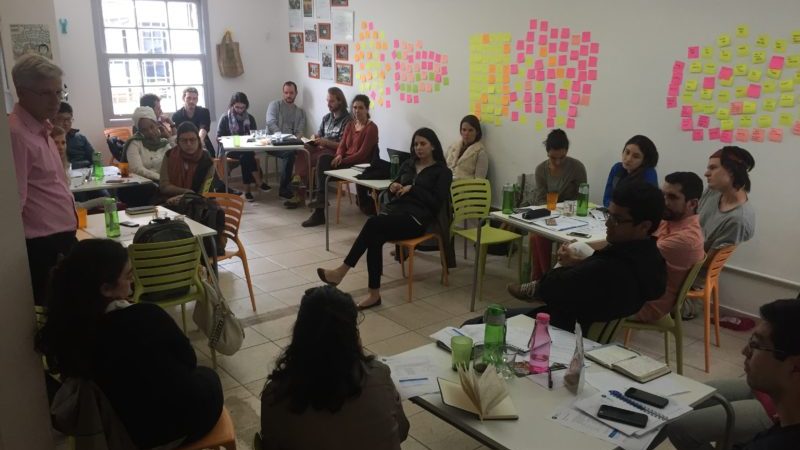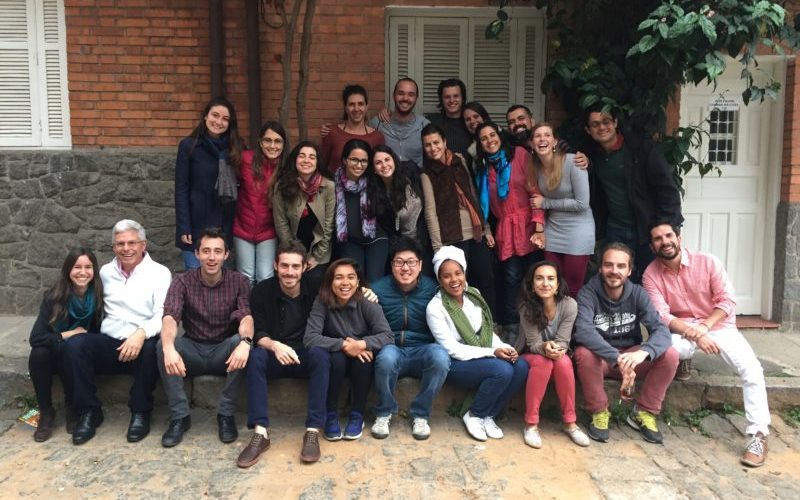In 2016, last September I attended the Negotiation and Conflict Resolution course at the Amani Institute. The 3-day course triggered my thoughts in many ways and I would like to share how the content fits into my daily working life. I am 32 years old, sociologist, and I have always worked for either civil society organizations or government social programs. Before sharing my ideas I will give a brief overview of the course. The Negotiation and Conflict Resolution course is designed to help people become better negotiators in both transactional negotiations and dispute resolution situations. It offers negotiation theory, exercises and roleplay simulations, followed by group discussions and individual analyses. The seminar explores the seven main elements related to a negotiation process: communication (active listening skills and effective questioning), the importance of relationship building, dealing with emotions, identifying your counterpart’s interests, building references to expand options, develop alternative solutions and formalization of agreement. Once you go in depth with each of these elements, you will learn a lot about yourself.

The thing that struck me most about the course was that the participants started to question their own values and tested them to the limit.
For example, to which extent are you willing to put aside your emotions and sense of integrity while negotiating an agreement or solving a conflict? I guess this willingness to question one’s own values and sense of integrity is also a consequence of the fact that the participants are mainly students of the Amani Institute, who are eager to have a career with social impact and want to make a difference with their work through overcoming business as usual. Based on the aforementioned seven elements, the most difficult part of a negotiating process in my experience is dealing with emotions, building a relationship based on trust, and finding out your counterpart’s interests. That is the heart of the matter. You can prepare as much as possible for a meeting, but unpredictable events can happen, because these parts of the process does not depend solely on yourself.
Moreover, dealing with the emotions of your counterpart, active listening, showing empathy, sticking to your values and waiting for the right moment to make a proposal, take a lot of patience.
For some people it can be quite an ordeal to find a balance between their own expectations and the expectations of their counterpart. How to do that? There are no ready-made answers in my opinion. Each situation is unique, with different actors and a different context. I have learned something new and different from every negotiation I have been part of. The difficulty of the proposed methodology of the course (the seven elements) is how to deal with situations in which your negotiation counterpart has a more traditional perspective on negotiations, meaning a perception of the negotiation process as a zero-sum game in which one person’s loss is another’s gain. The fact that I am prepared to look for alternatives, to build up a relationship based on trust and to partly set aside my own emotions and values, doesn’t mean my counterpart is prepared to do so. How to deal with that? Probably Amani’s students have a similar experience in practice, since they work on issues of social innovation. In other words, to achieve our ambition of changing the world it is necessary to thoroughly understand the system we criticize. It is therefore a must to also understand the traditional ways of negotiating and doing business.
To put it simply, you cannot change what you do not understand and you have to understand the prevailing rules of the game in order change it.
In addition, we can always learn from the traditional ways of negotiating and try to use some of these elements to our own advantage. In this regard the challenges and chances for social innovation are substantial. The fact that traditional forms of negotiating are still predominant in practice also shows that there are great possibilities for social innovation. Fortunately, we are still in the learning process, so there is great scope for doing things differently.
It is quite an ambition to change the world and it is a process that does not have an end. If you want to have a meaningful career and generate social impact, you need to prepare yourself to go through seemingly contradictory negotiation and conflict resolution processes within the third sector. For instance, an organization that defends the decent work agenda sometimes lacks the resources or structure to provide good working conditions to their own staff. Therefore, it sometimes takes a lot of effort to negotiate and solve conflicts inside your own organization. When you are trying to raise funds for the organization’s decent work project at the same time, this can feel hypocrite, or at least ambivalent. It causes frustration, because you feel that the actions of your own organization are no different from the actions of the corporate or government sector you criticize.
To put it differently, we, ourselves and our organizations, are part and a reflection of society as it is. The third sector is not an ideal or perfect niche, which can serve as an example for society as a whole. Thus, it is necessary to have a lot of self-criticism while trying to do things differently and while constructing alternatives to predominant business practices. Social innovation is not like living on a pink cloud. This pink cloud can disappear in several situations. For instance, when it comes to coalition building and networking in the third sector. In general, negotiation and conflict resolution practices within the third sector are more integrative (constructed collectively) than competitive (winning or losing). People working in the third sector tend to be sensitive to social problems and want to come up with aligned advocacy strategies to solve them. However, you also need to be realistic and acknowledge that although civil society organizations might share similar purposes, they often have different ways of operating. You might end up having difficult negotiations about who will lead the collective action and who can claim the results.
So, it can happen that your only contribution to a coalition is providing communication support, which of course can be a valuable contribution. On the other hand, it can also happen that you do most of the work for a project, as compared to your advocacy partners, but that you still need their contribution to realize the project objectives. For example, imagine that you are coordinating a campaign for gender equality in soccer. You can build a coalition with a range of likeminded organizations, but in the end you also need to engage the Brazilian Confederation of Soccer (CBF). Personally, you are convinced that the sexist policies of CBF are an important cause for gender inequality in Brazilian soccer. What, then, is the best strategy to battle sexism in the ‘macho’ world of soccer? Stay on the sidelines or getting your hands dirty and involve CBF in your campaign? Which strategy would bring about more results? In the end, one of the main challenges of social innovation is to build coalitions and networks with a range of actors with different point of views, with the aim to develop a common agenda. Bear in mind that the results are often modest.
Again, social innovation is not like living on a pink cloud.
What I am trying to say is that it can feel like you are swimming upstream when trying to bring about social innovation. After you manage to negotiate advocacy coalitions and collective actions, you subsequently have to negotiate with interest groups and government agencies whose aim it is to keep things exactly the way they are. This brings us to another main challenge of social innovation, finding windows of opportunity in the political arena. It is key to understand the political forces in place and how to influence them, in order to bring about social policies that will help us fuel social change. Without changing social policies you might have occasional success, but in the long run social innovation is only possible through a change in culture and values.
Public policies can be the driving force behind such a change. At the same time, is difficult to influence public policies and all too often, you will leave the political arena empty-handed. On the other hand, small victories might have substantial social impact, which makes it worthwhile to engage in such negotiations Finally, the interesting thing is that when you do gain success and make social change, you have to let it go. Because even though you have changed society for the best, the result is not yours, it is for society at large. The key to social innovation is empowerment, enable people to develop their own strategies and ways of doing things. Claiming those successes for yourself would make you selfish and become exactly what you are fighting against. The challenge is to continually bring social change, right? So, what you do is find yourself another challenge and start the process all over again. People in the third sector are often restless people, always testing themselves to the limit, who always need to start over again. In this sense we are like Buddhist monks that spend days on making a sand painting, only to destroy it as soon as it is done and start over again. Still, we prefer to believe in our own pink cloud and work for a change rather than believe that is nothing to do about it.

Last but not least, I would like to thank the Amani Institute for the great experience of participating in the “Negotiation and Conflict Resolution” course. The village where the course takes place in São Paulo is very cosy, the coordinators are very helpful, the trainer – Marcelo Fernandes – uses a nice methodology and offers challenging exercises, and the students are wise, driven and amusing. The fact that the students are from different countries, with different backgrounds and cultures, provides a global perspective for the discussions.
Article by Marina Ferro | Instituto Ethos







